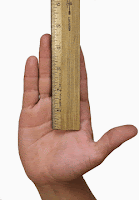Gripping
Choosing and maintaining the right grip on your racket is vital for optimal performance in tennis, badminton, and squash. Proper grip size and material influence your control, comfort, and injury prevention. This guide covers everything you need to know about selecting, adjusting, and maintaining racket grips across these three sports.
1. Tennis Grip Sizes
Tennis grip sizes are measured in inches or millimeters, differing between regions. Europe uses sizes 0 to 5, while the USA uses 4 inches to 4 5/8 inches. The following table summarizes the conversion:
| Outline in mm | Outline in inches (USA) | Grip size in Europe |
| 100 – 102 mm | 4 | 0 |
| 103 – 105 mm | 4 1/8 | 1 |
| 106 – 108 mm | 4 2/8 = 4 1/4 | 2 |
| 109 – 111 mm | 4 3/8 | 3 |
| 112 – 114 mm | 4 4/8 = 4 1/2 | 4 |
| 115 – 117 mm | 4 5/8 | 5 |
Finding Your Ideal Grip Size:
Wrap your dominant hand around the handle. There should be enough space to fit the index finger of your other hand between your fingertips and the base of your thumb. For more precision, measure the distance from the top of your ring finger to the second hand line—this corresponds to your optimal handle outline.


Adjusting Grip Size:
If unsure, opt for a smaller size as it can be enlarged using overgrips or heat-shrink tubes. Decreasing a too-large grip size is not feasible.
2. Badminton Grip Sizes
-
Standard Options: Unlike tennis, badminton grip sizes are typically denoted as G1 through G5, with G1 being the largest.
-
Customization: Players often adjust with overgrips to suit their preferences for comfort and control. The right size promotes wrist flexibility and rapid movement.
3. Squash Grip Sizes
-
Simplified Sizing: Squash grips are less standardized compared to tennis and badminton. Most players start with the factory grip size and modify it using overgrips or replacement grips to achieve the desired thickness.
4. Types of Grips and Their Applications
-
Replacement Grips: These are thicker grips applied directly to the handle for a secure base. Ideal for players who need a fresh foundation or thicker handle.
-
Overgrips: Thinner, supplemental grips added over the replacement grip to tweak the handle thickness, improve tackiness, and extend the life of the underlying grip.
-
Towel Grips: Popular in squash and badminton, towel grips offer excellent sweat absorption and comfort but need frequent replacement.
5. Adjusting and Applying Grips
-
Applying Replacement Grips:
-
Remove the old grip.
-
Start at the butt of the racket and wind the grip upward, ensuring slight overlap for even coverage.
-
Secure the end with finishing tape.
-
-
Adding Overgrips:
-
Apply over the existing grip, beginning at the butt.
-
Wind it tightly with a slight overlap.
-
Cut excess material and secure with tape.
-
-
Heat-Shrink Tubes: Used to increase grip size. Please contact us if you would like us to increase your grip size.
6. Maintaining Your Grip
-
Grip Longevity: Replace overgrips regularly, especially if they become slick or lose tackiness.
-
Signs of Wear: Fraying, loss of cushion, or reduced grip traction indicate it’s time for a new grip.
-
Tips for Care: Wipe down grips post-use to minimize sweat buildup and bacteria growth.
Selecting the right grip size and type is essential for maximizing control, power, and comfort in tennis, badminton, and squash. Regular maintenance and proper adjustments ensure you get the most out of your equipment and play at your best.



